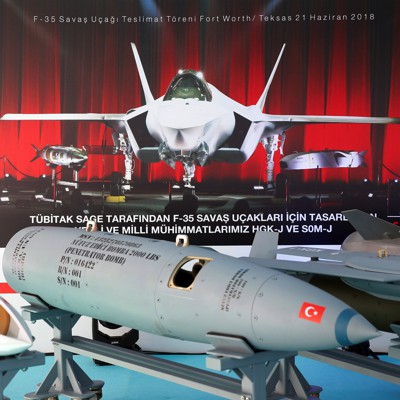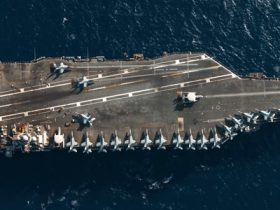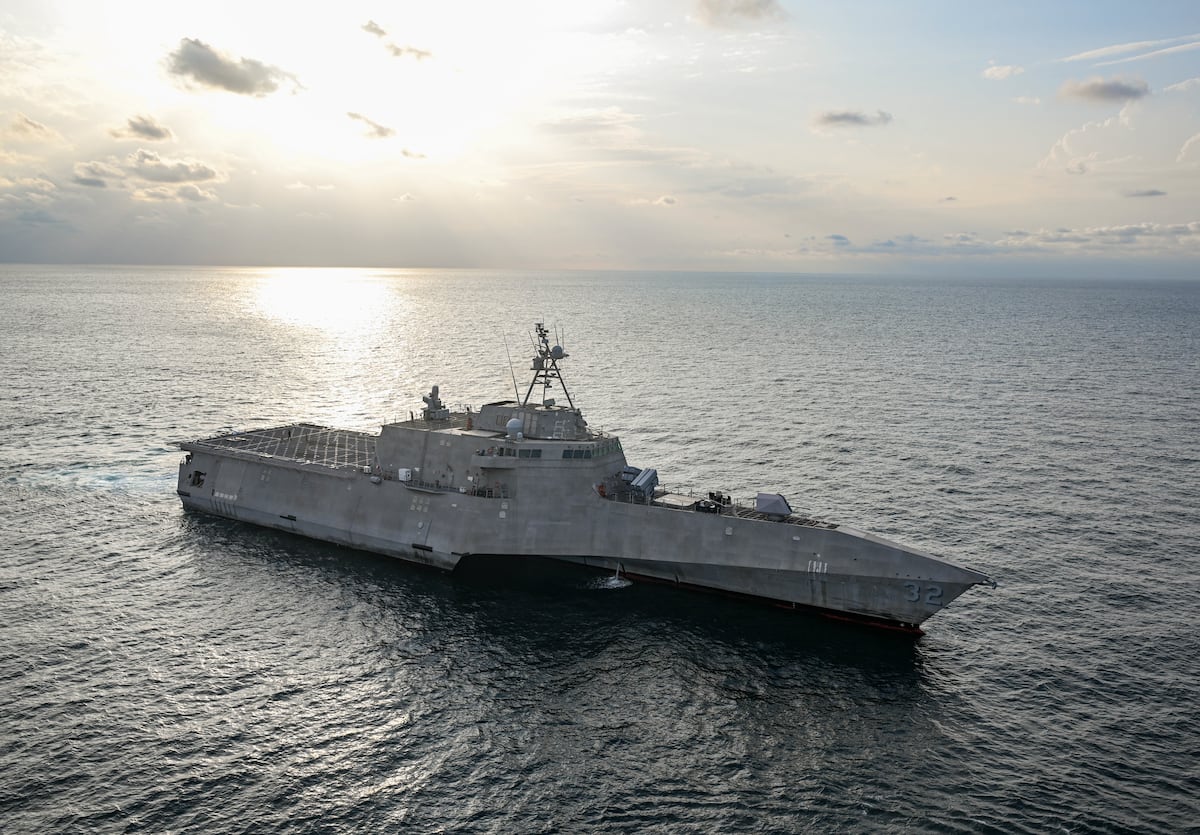By most accounts, President Trump and President Erdogan had a productive meeting in the White House last month. Several major business deals were agreed, including cooperation on civilian nuclear energy. Russia’s invasion of Ukraine and the future of Syria were also on the agenda.
Another topic that received considerable attention was U.S.-Turkish defense cooperation. In recent years, Turkey’s domestic defense industry has gone global. Turkish weapons—especially drones—are sought after from Asia to Africa to Europe. While U.S.-Turkish defense cooperation remains healthy, there is plenty of room for growth. But one sticking point still needs to be resolved to take the relationship to the next level: Turkey’s acquisition of the Russian-made S-400 air defense system and its subsequent expulsion from the F-35 Joint Strike Fighter program.
In 2015, Turkey shot down a Russian fighter jet that strayed into its airspace from Syria. At the time, the fighting in Syria was threatening to spill into Turkey, and Ankara faced a genuine air-defense problem. The problem was so acute that NATO deployed Patriot missile batteries under Operation Active Fence along Turkey’s southern border to help secure the skies. Around the same time, Turkey asked the United States for permission to buy Patriots of its own. Talks faltered over Ankara’s insistence on licensed production and technology transfer, which Washington was unwilling to grant. This pushed Turkey to look elsewhere—eventually to Russia’s S-400.
By 2017, Turkey had placed the order for the S-400, and two years later, it had taken delivery of the system. Legitimate concerns were raised in the United States about whether a NATO member operating such an advanced Russian system should simultaneously fly the alliance’s most advanced fifth-generation fighter jet; the main fear was that the radar—and ultimately Moscow—might gather sensitive data about the jet’s networks, performance, and signatures. Later that year, Turkey was formally ejected from the F-35 program.
Even so, Turkey wisely treaded carefully with its new acquisition. It has conducted only one live test-fire exercise in 2020 and the system has remained in active in a state of low readiness since. Lat year, Turkish Defense Minister Yaşar Güler said that “the threat would have to escalate to a very high level, an air attack, for us to use the S-400.” At a time when Turkey has been making rapid advancements in its own domestically produced air-defense systems, it has decided not to incorporate the S-400 into its “Steel Dome” air-defense-network project.
The S-400 issue remains the main obstacle to closer U.S.-Turkish defense relations. A few potential solutions have been floated. One idea is to mimic the arrangement for the S-300 system that Greece acquired from Cyprus in 2007. Usually kept in storage on Crete, the S-300 was occasionally exercised but not used for day-to-day air-defense operations.
Others have suggested that Turkey could sell the system to one of the few other countries that have purchased the S-400 from Russia, or even sell it back to Moscow. Still others have proposed that Turkey donate or sell the system to Ukraine. While Ankara has quietly provided Kyiv with significant military hardware, a highly public and controversial transfer of the S-400 would likely be a step too far. Meanwhile, at least one news outlet recently suggested that talks are underway on a deal that would see Turkey render the S-400 “inoperable” in exchange for a return to the F-35 fold.
There is yet one more one creative albeit unorthodox option worth exploring: the so-called “Nakhchivan Solution.”
Nakhchivan is an exclave of Azerbaijan, bordered by Armenia to the north and Iran to the south, and sharing a short five-mile border with Turkey. Turkey and Azerbaijan routinely conduct joint military exercises. Under the Nakhchivan Solution, Turkey would deploy its S-400 system to Nakhchivan for such an exercise—and then simply leave it there in a deactivated or in a mothballed state, with Turkish crews rotating in and out as needed for maintenance.
Furthermore, this arrangement would remove the system from Turkish territory, satisfying U.S. and NATO concerns, while keeping it close enough in allied Azerbaijan that it could quickly return if ever required. This would not be the sale or transfer of the weapon system to Azerbaijani ownership. So in this scenario, any export restrictions that Russia might have placed on the S-400 would not apply. Turkey would continue to own and maintain the S-400, but do so outside its borders. In parallel, Turkey should then be brought back into the F-35 program and allowed to buy Patriot missiles.
Considering the lack of creative solutions after more than half a decade, this proposal makes sense for three reasons.
First, it would be consistent with the deep and expanding level of defense cooperation between Azerbaijan and Turkey. The popular expression Bir millet, iki devlet (“One nation, two states”) underscores the cultural, historical, and linguistic ties binding the two countries. The 1992 Military Training Cooperation Agreement laid the foundation for modern Azerbaijani-Turkish military relations, while the 2010 Agreement on Strategic Partnership and Mutual Assistance further deepened cooperation. The 2021 Shusha Declaration elevated bilateral ties to a higher level, emphasizing the security dimension of the relationship. Furthermore, deploying the S-400 to Nakhchivan would be in the spirit of the 1921 Treaty of Kars, commonly interpreted as offering Turkey a de facto protector status of Nakhchivan.
Second, the two regional powers most likely to object—Russia and Iran—are either too weak or too distracted to respond effectively. Iran may dislike the presence of such a system on its northern border, but in practice, there is nothing preventing Turkey from deploying the S-400 close to the Iranian frontier on its own territory right now. Anyway, Iran has been left too weak to do anything beyond complain. Meanwhile, Russia’s influence in the South Caucasus is clearly waning, as evidenced by the recent White House-led peace initiative between Armenia and Azerbaijan. Moscow is also unlikely to have the capacity to block such a deployment. Baku’s own relations with Moscow are at a low point, so there will be less concern by Azerbaijan to consider Russia’s anxieties about such a move. As for Azerbaijan, it would be a winner in this scenario. Helping the U.S. break the impasse over the S-400 issue would be viewed favorably not only in the White House but across NATO’s capitals too.
Finally, perhaps American policymakers should take a more relaxed view of the lethality and effectiveness of the S-400. Although it has shown to be a capable platform in Ukraine, it has not lived up to the hype. The exact number is impossible to know, but open-source reporting documents multiple Ukrainian strikes that destroyed or disabled several S-400 batteries. Furthermore, Israeli F-35s and the S-400 have already operated in the same battlespace in Syria, where the stealthy F-35 has proved quite effective against the Russian air defense system.
It has now been six years since Turkey took delivery of the S-400 and was ejected from the F-35 program. The time has come to resolve this issue in a way that satisfies all parties while elevating the U.S.-Turkish bilateral relationship to the next level. If such a solution could be announced in advance of the next NATO summit—set to be held in Turkey next July—it would be a welcome development for the transatlantic community. Now is the time for new and creative ideas.
Read the full article here








Leave a Reply